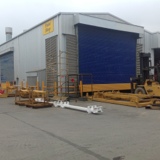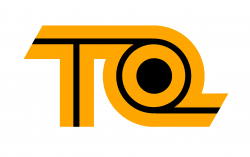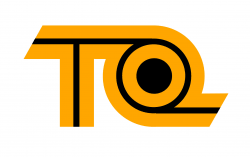Information
-
Audit Title
-
Document No.
-
Client / Site
-
Conducted on
-
Prepared by
-
Location
-
Personnel
General
-
Is spray painting conducted on the site? The includes compressed air, airless and powder coating.
-
Are all spray booths reviewed in this audit?
Training
-
Are procedures available for the operation of all spray booths?
-
Are procedures available for maintenance and servicing of all spray booth
-
Are all persons who operate spray booths trained in the operation and servicing of the booth?
-
Are all persons who operate spray booths trained in the Material Safety Data Sheets of the chemicals being used in the booth?
Risk Assessment
-
Has the spray painting activities at each spray booth been risk assessed?
-
Have risk assessments been reviewed annually?
-
Has the Area Safety Representative reviewed all spray painting risk assessments?
-
Are all products sprayed in the spray booths approved by the manufacturer for spraying? The includes paints and thinners.
-
Are isocyonate based paints sprayed in spray booths? If yes, are the requirements of the material safety data sheets complied with? <br>This includes health monitoring.
-
Are lead based paints sprayed in spray booths. If yes, are the requirements if the material safety data sheets? This includes health monitoring.
-
Are all products sprayed in all spray booths registered on the hazardous substances register (chemalert)?
-
Are high risk chemicals sprayed in the spray booth? If yes, is a list of the high risk chemicals displayed?<br><br>High risk chemicals Hazardous chemicals should be considered as high risk if it is:<br>a chemical that is carcinogenic <br>a chemical that is mutagenic, genotoxic or has reproductive hazards <br>a chemical which affects the central nervous system (which can also affect hearing due to ototoxic effects). That is, they may cause hearing loss or exacerbate the effects of noise. Evaluating the use of these chemicals should be carried out in conjunction with the Code of Practice: Managing Noise and Preventing Hearing Loss at Work.<br>a skin or respiratory sensitiser or if it is corrosive or has acute irritant effects<br>a chemical which causes severe effects after a single, repeated or prolonged exposure<br>a flammable liquid, vapour or aerosols<br><br>Many chemicals that are used in spray painting, including 2-part polyurethane paints containing isocyanates and toluene (an ingredient in many oil-based paints), and in powder coating, such as triglycidyl isocyanurate, hydrofluoric acid and chromic acid are known to present significant health risks and should be assessed as high risk.
-
Are medium risk chemicals sprayed in th espray booth? If yes, is a list of medium risk chemicals displayed?<br><br>Medium risk hazardous chemicals include any substances that contain organic solvents that are not already assessed as high risk, or flammable liquids or combustible dusts.
-
is a list of low risk chemicals displayed?<br><br>Hazardous chemicals that are low risk include any other substances not already assessed as high or medium.
-
Are risks associated with spray painting outside spray booth Identifed and controlled with a Job Safety Analysis or SWMS. This includes the assessment of high and medium risk chemicals.
-
Are exposure standards assessed to verify that each chemical 8 hour time weighted average, peak limitation and short term exposure limits are not exceeded?
-
Has air monitoring been conducted to verify exposure limits are not being exceeded? If yes, are the records stored in a secure place to ensure access for 30 years?
-
Are chemicals sprayed in the spray booths listed in the Work Health and Safety Act Schedule 14. If yes, is health monitoring being conducted.
-
If Heath monitoring is conducted,mare results available to employees.
-
Are health monitoring records stored in a secure place?
Spray Painting in Spray Booths
-
Has all spray booths been designed, constructed and installed to comply with AS/NZS 4114.1 – Spray painting booths?<br><br>
-
Has all spray booths been fitted with an exhaust capture system and a ventilation system that includes a filter for removing airborne contaminants?<br>
-
Are all spray booth ventilation systems capable of producing a minimum air movement of:<br>0.3 m/s for a full downdraft booth<br>0.4 m/s for electrostatic spraying<br>0.5 m/s for any other booth?<br>
-
Are all spray booths inspected at regular intervals and maintained according to manufacturer’s specifications?<br><br>
-
Do all spray booths have a sign indicating the time people should allow for chemicals to clear before entering the spray booth?<br>
-
Are all spray booths operated with a 5 minute post purge cycle to clear contaminants?
Spray Painting outside a Spray Booth
-
Do procedures require exclusion zones used when painting outside spray booths?
-
Are restricted area signs available for exclusion zones when painting outside spray booths?
Maintenance
-
Are spray booth regularly cleaned and maintained in accordance with the manufacturer’s instructions?
-
Are spray guns are tested in a safe manner?
-
Are spray booths are cleaned regularly?<br>Cleaning of spray booths is made easier by covering exposed surfaces with non-flammable plastic film, which can be easily removed for cleaning or washing. The use of absorbent material, for example paper, cardboards, wooden platforms, should be avoided.
-
Is all air filter medium is cleaned according to the manufacturer’s instructions. <br>Frequent cleaning or replacement of the filter medium is required to prevent deposits blocking air flow. Never spray paint in the spray booth without an air filter medium.
-
Are all pressurised paint pots and pressurised spray guns are cleaned in accordance with manufacturer’s instructions. <br>Pressure from the gun and the paint pot should be released prior to cleaning.<br>The gun should never be cleaned by covering the nozzle with a cloth or other material held in the hand, as this method of cleaning can result in paint injection injuries when used with airless spray guns.<br>
Personal Protective Equipment
-
Is personal protective equipment (PPE) is to be used at the workplace:<br>- selected to minimise risk to health and safety<br>- suitable for the nature of the work and any hazard associated with the work<br>- suitable size and fit and reasonably comfortable for the person wearing it<br>- maintained, repaired or replaced so it continues to minimise the risk<br>- used or worn by the worker, so far as is reasonably practicable?
-
Are employees who perform painting trained in the proper use and wearing of personal protective equipment; and the storage and maintenance of personal protective equipment?
-
Do employees who perform painting have their eyes, face and head protected whenever spray painting or powder coating.?<br>(Protection should comply with AS/NZS 1336 Recommended practices for occupational eye protection.)
-
Do employees who perform spray painting wear hearing protection if they are exposed to noise levels in excess of the exposure standard?<br>(Protection should comply with AS/NZS 1270 Acoustics - Hearing protectors and selected in accordance with AS / NZS 1269.3 Occupational noise management – Hearing protector program.)
-
Do employees who perform painting wear gloves and clothing to protect exposed skin?<br>(Gloves and clothing should comply with AS/NZS 2161 (series) Occupational protective gloves and AS/NZS ISO 13994: Clothing for protection against chemicals - Determination of the resistance of protective clothing materials to penetration by liquids under pressure.)
-
Do employees who perform painting wear foot protection that is non-slip and be heat and fire resistant?<br>(Protection should comply with AS/NZS 2210 (series) Occupational protective footwear and AS/NZS 2210.1 Occupational protective footwear - Guide to selection, care and use.)
-
Do employees who perform spray painting with two part epoxy or polyurethane paint, or some catalytic acrylic paints should be provided with either a full face piece supplied air respirator or half face piece supplied air respirator?<br>(Respirators should be fitted for each person individually. The tightness of all connections and the condition of the face piece, headbands and valves should be checked before each use. Air supplied respirators may be required in some situations, for example, confined spaces. Select air supplied respirators that generate less noise so the worker can hear warning signals and will not become easily tangled or caught on other objects.)<br>Respirators should closely fit the wearer to provide its designed protection, it is essential that an adequate face seal is achieved. They should be cleaned and disinfected with a broad-spectrum disinfectant in accordance with the manufacturer’s instructions after each use. They should also be inspected for damage before and after each use. Filters should be changed in accordance with manufacturer’s instructions and stored to prevent contaminations, damage and deterioration. Airline filters should be changed as required.<br>Protection should comply with AS/NZS 1715 Selection, use and maintenance of respiratory protective equipment and AS/NZS 1716 Respiratory protective devices.
-
Are employee who wear respirator checked to ensure respirators closely fit the wearer to provide its designed protection?<br>(It is essential that an adequate face seal is achieved.)
-
Do employees who perform spray painting clean and disinfect their respirators with a broad-spectrum disinfectant in accordance with the manufacturer’s instructions after each use?<br>(Protection should comply with AS/NZS 1715 Selection, use and maintenance of respiratory protective equipment and AS/NZS 1716 Respiratory protective devices.)
-
Do employees who perform spray painting nspect their respirators for damage before and after each use. <br>(Protection should comply with AS/NZS 1715 Selection, use and maintenance of respiratory protective equipment and AS/NZS 1716 Respiratory protective devices.)
-
Do employees who perform spray painting change filters in accordance with manufacturer’s instructions and stored to prevent contaminations, damage and deterioration. <br>Airline filters should be changed as required.<br>(Protection should comply with AS/NZS 1715 Selection, use and maintenance of respiratory protective equipment and AS/NZS 1716 Respiratory protective devices.)
Fire and Explosion
-
Has the risks of fire and explosion been included in paint booth risk assessments?
-
Do chemical decanting procedures require when pouring flammable liquids from one container into another, set both containers down on an earthed surface then bring the containers into contact before pouring and keep them in contact while pouring?<br><br>where containers have air lines, always replace the plugs as soon as the air lines are disconnected<br>provide suitable fire extinguishers that are readily available, and<br>store and handle flammable or combustible liquids in accordance with AS 1940 The storage and handling of flammable and combustible liquids, for example:<br>store paints in containers with lids<br>always return unused liquid to a labelled container for that liquid<br>store solvents in covered containers with taps to avoid the need for pouring<br>solvent soaked rags should be stored wet and safely contained after use or removed from the workshop<br>store flammable chemicals, mixtures or materials including unused liquid in tightly closed containers that are correctly labelled<br>store flammable chemicals, mixtures or materials in well ventilated storage areas<br>replace lids of containers after each use<br>do not leave containers of flammable liquid near any heat source or source of ignition or in direct sunlight, and<br>place warning signs on storage cabinets and outside storage areas.<br>To prevent the risk of fire and explosion with spray painting, powder coating and electrostatic spray painting, drums of paint and cleaning solvents should be removed from the exclusion zone before spray painting commences. The cleaning solvent should have a flashpoint of not less than 23 degrees Celsius and preferably above the room temperature. Metal solvent containers should only be used when they are earthed and spray guns should not be cleaned in areas with the high voltage supply switched on.<br>Further guidance on electrostatic spraying is available in AS 2268 Electrostatic paint and powder spray guns for explosive atmospheres and AS 3754 Safe application of powder coatings by electrostatic spraying. <br>
-
Do operating procedures require where chemical containers have air lines, always replace the plugs as soon as the air lines are disconnected?<br>provide suitable fire extinguishers that are readily available, and<br>store and handle flammable or combustible liquids in accordance with AS 1940 The storage and handling of flammable and combustible liquids, for example:<br>store paints in containers with lids<br>always return unused liquid to a labelled container for that liquid<br>store solvents in covered containers with taps to avoid the need for pouring<br>solvent soaked rags should be stored wet and safely contained after use or removed from the workshop<br>store flammable chemicals, mixtures or materials including unused liquid in tightly closed containers that are correctly labelled<br>store flammable chemicals, mixtures or materials in well ventilated storage areas<br>replace lids of containers after each use<br>do not leave containers of flammable liquid near any heat source or source of ignition or in direct sunlight, and<br>place warning signs on storage cabinets and outside storage areas.<br>To prevent the risk of fire and explosion with spray painting, powder coating and electrostatic spray painting, drums of paint and cleaning solvents should be removed from the exclusion zone before spray painting commences. The cleaning solvent should have a flashpoint of not less than 23 degrees Celsius and preferably above the room temperature. Metal solvent containers should only be used when they are earthed and spray guns should not be cleaned in areas with the high voltage supply switched on.<br>Further guidance on electrostatic spraying is available in AS 2268 Electrostatic paint and powder spray guns for explosive atmospheres and AS 3754 Safe application of powder coatings by electrostatic spraying. <br>
-
Are suitable fire extinguishers that are readily available to spray paint booths, painting areas and paint storage areas?<br><br>store and handle flammable or combustible liquids in accordance with AS 1940 The storage and handling of flammable and combustible liquids, for example:<br>store paints in containers with lids<br>always return unused liquid to a labelled container for that liquid<br>store solvents in covered containers with taps to avoid the need for pouring<br>solvent soaked rags should be stored wet and safely contained after use or removed from the workshop<br>store flammable chemicals, mixtures or materials including unused liquid in tightly closed containers that are correctly labelled<br>store flammable chemicals, mixtures or materials in well ventilated storage areas<br>replace lids of containers after each use<br>do not leave containers of flammable liquid near any heat source or source of ignition or in direct sunlight, and<br>place warning signs on storage cabinets and outside storage areas.<br>To prevent the risk of fire and explosion with spray painting, powder coating and electrostatic spray painting, drums of paint and cleaning solvents should be removed from the exclusion zone before spray painting commences. The cleaning solvent should have a flashpoint of not less than 23 degrees Celsius and preferably above the room temperature. Metal solvent containers should only be used when they are earthed and spray guns should not be cleaned in areas with the high voltage supply switched on.<br>Further guidance on electrostatic spraying is available in AS 2268 Electrostatic paint and powder spray guns for explosive atmospheres and AS 3754 Safe application of powder coatings by electrostatic spraying. <br>
-
Are flammable or combustible liquids stored in accordance with AS 1940 The storage and handling of flammable and combustible liquids?<br>For example:<br>- store paints in containers with lids<br>- always return unused liquid to a labelled container for that liquid<br>- store solvents in covered containers with taps to avoid the need for pouring<br>- solvent soaked rags should be stored wet and safely contained after use or removed from the workshop<br>- store flammable chemicals, mixtures or materials including unused liquid in tightly closed containers that are correctly labelled<br>- store flammable chemicals, mixtures or materials in well ventilated storage areas<br>- replace lids of containers after each use<br>- do not leave containers of flammable liquid near any heat source or source of ignition or in direct sunlight, and<br>- place warning signs on storage cabinets and outside storage areas?<br>
Electricity
-
Is all electrical equipment should be kept at a safe distance from spray painting exclusion zones?<br> This includes fans, turntables, drying lamps, fixed lighting and switches, heating equipment, electrical appliances used during cleaning and repairing operations and appliances used to mix paint formulations.<br><br>
-
Is all portable electrical equipment protected with earth leakage current protection by means of a residual current device (RCD)?
-
Do spray painting procedures provide for the control of static electricity?<br>
-
Do spray painting procedures provide for the control of static electricity?<br><br><br>Static electricity charges can be generated in any spray painting process if two differently charged materials come into contact. It can be generated by:<br>- touching two metal cans together during decanting<br>- clothing or synthetic fibres prone to accumulation of static charge including nylon, pure wool, wool blends (unless treated) and non-conducting footwear<br>- liquid flowing in pipes or vessels, and<br>- airless spray painting using high fluid pressure (control this by electrically earthing the airless spray gun and any conductive article that is being sprayed including a container that the flow from the gun is directed into).<br><br>Installation and wiring of electrical equipment in a spray painting workshop, including those in mixing and storage areas, should comply with AS 2381.1 Electrical equipment for explosive atmospheres – selection, installation and maintenance – general requirements and AS 3000 Electrical installations – buildings, structures and premises.<br>
Manual Tasks
-
Has manual handling risk been assessed as part of the paint booth risk assessments?
Confined Spaces
-
Is spray painting undertaken in or near confined spaces?
-
Do confined space risk assessments consider the impact of spray painting?
Heat
-
Is the impact of heat consider in spray painting risk assessments?
-
Are procedures in place for working outdoors in direct sunlight?
Noise
-
Have paint booths been examined in noise surveys?
-
Have painting preparation activities (grinding, sanding, inside paint booths and compressors) been assessed for noise?
-
Are employees who perform spray painting assessed with audio metric testing?
Injection Injury
-
Are empties who operate spray guns exposed to injection injuries? <br><br>(e.g. cover spray nozzle when cleaning gun)
-
Are injections incidents reported and referred for medical assessment?
-
Are spray guns fitted with tip guards?
-
Is the spray gun fitted with a trigger lock? If yes, is it functional?
Review and Approval
-
Add signature












